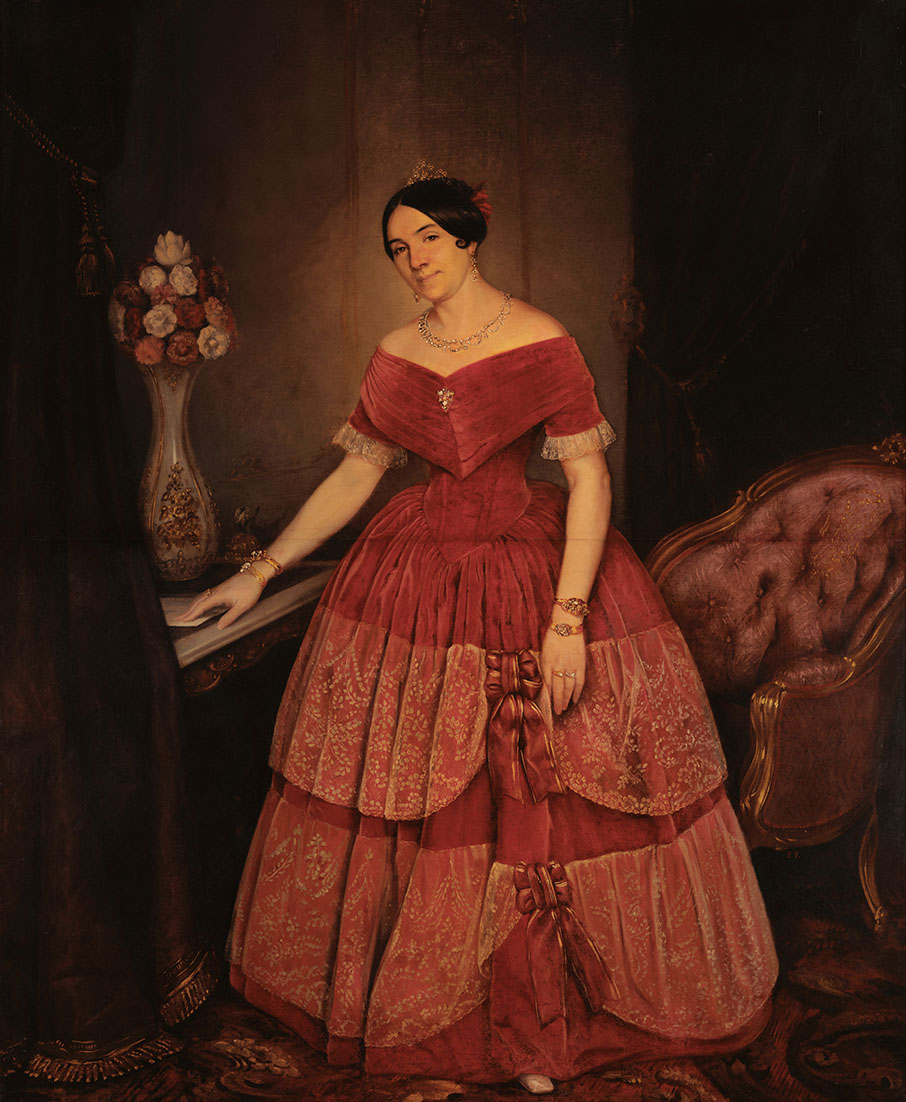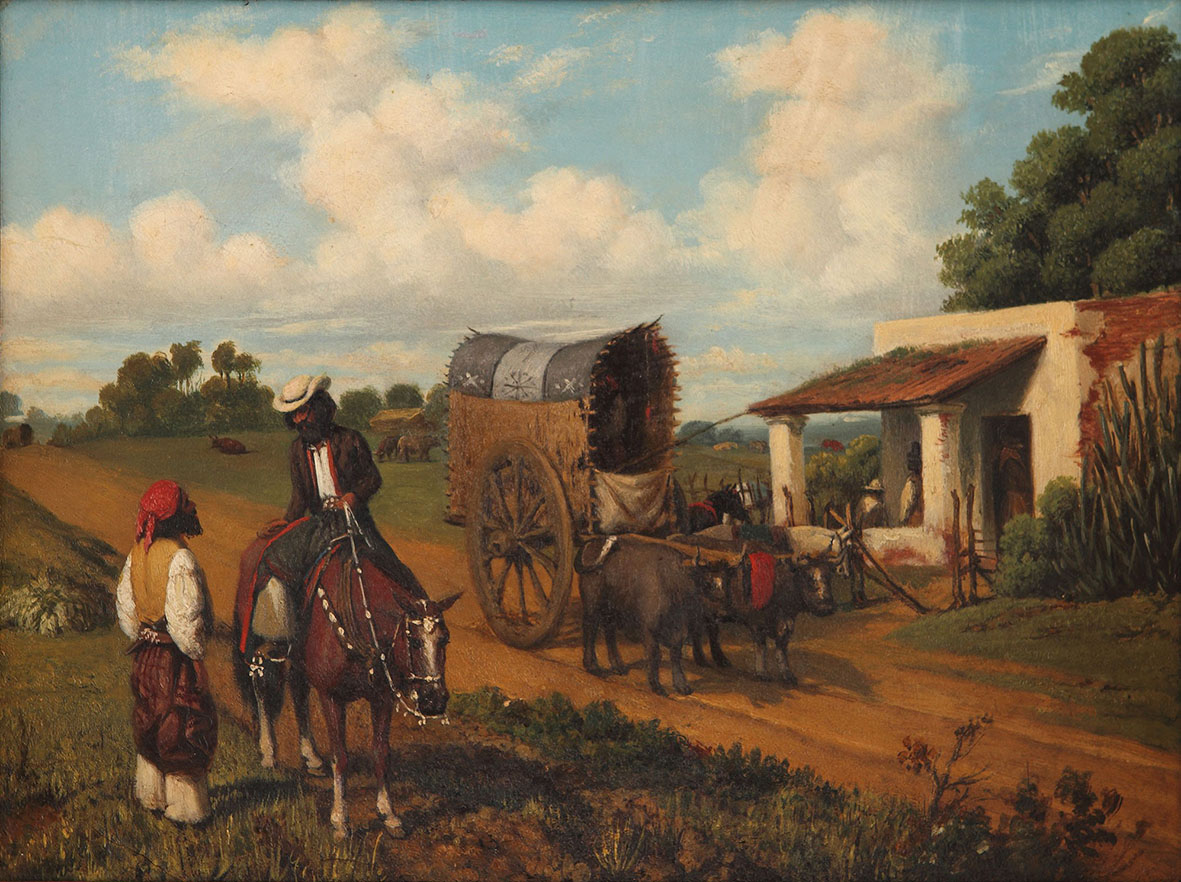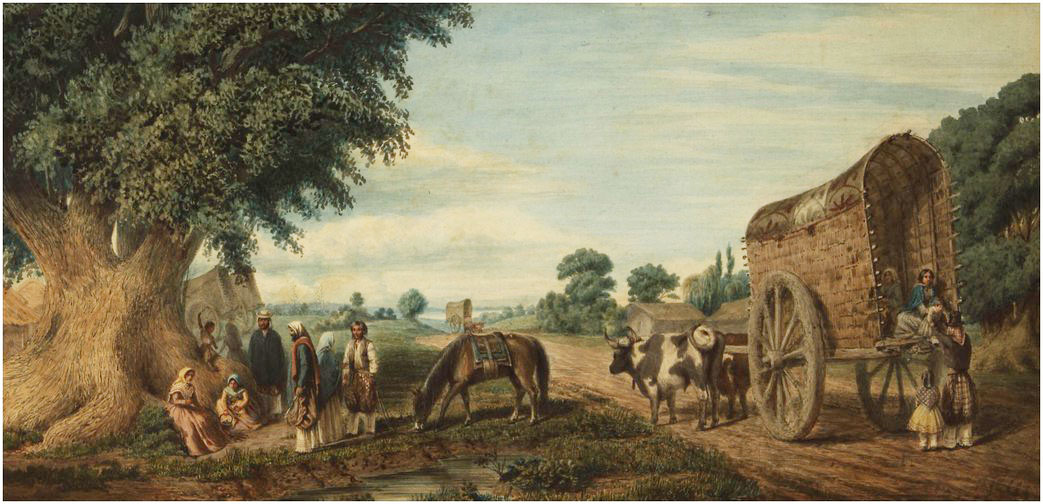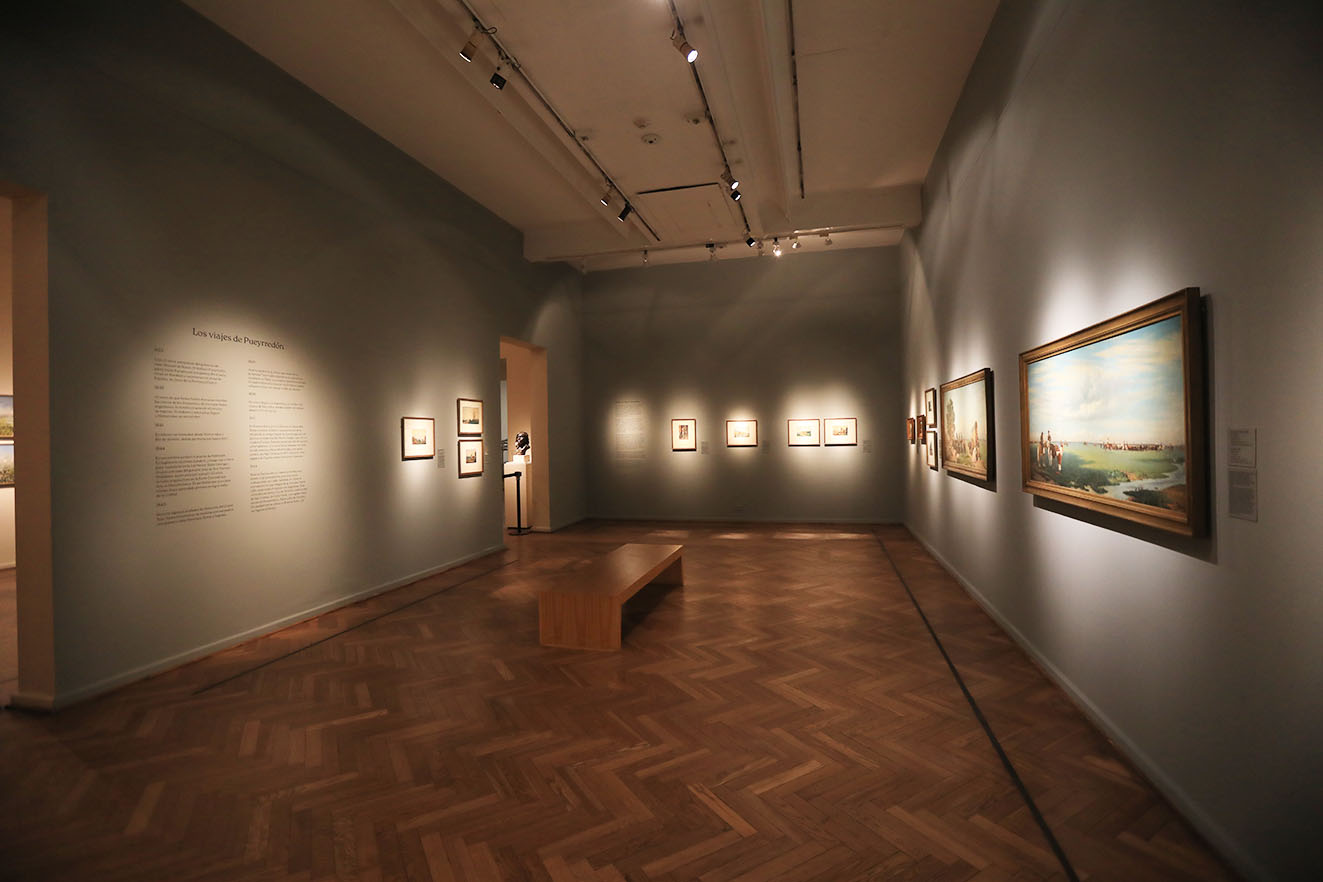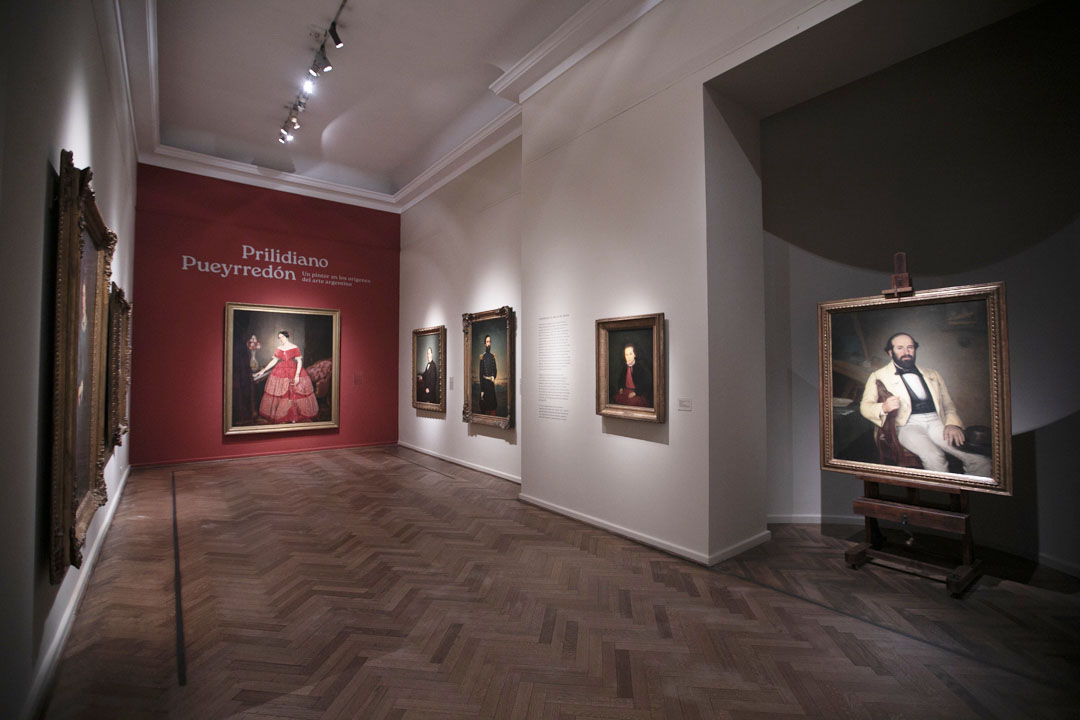The Prilidiano Pueyrredón exhibition. A painter at the origins of Argentine art remembers the Bicentennial of his birth and focuses on his central position in the history of Argentine art of the 19th century.
The exhibition [1], which mostly presents works from the National Museum of Fine Arts, also collaborates with the Emilio Pettoruti Provincial Museum of Fine Arts - from the city of La Plata - and the National Historical Museum, which lent paintings and drawings by their own collections. The nearly forty watercolors and oil paintings, on paper, canvas and copper, are a sample of different stages of his life: from his stays abroad to the scenes made in Buenos Aires.
In his journey he aims to make known the facet of the artist and his profession; a painter who set up his own atelier to exhibit his art, trained disciples, built a loyal clientele for his painting and disseminated it through reproducible media. To demonstrate this professional nature of his activity, the exhibition includes a selection of works that reflect his entire active life as a painter, from his time abroad (between 1835 and 1850), to the large-format pieces from the 1860s.
The exhibition is presented in six thematic cores
The beginning of the exhibition, “traditionalism”, is related to tradicionalist painting for which Prilidiano had numerous commissions.
Costumbrismo is characterized by presenting types or situations that exalt popular figures and traditions. In these compositions, marked by a nostalgic look, the characters exemplify various customs, and the scenes point out the particularities of a city, a region or a community.
Tradicionalist painting had its peak in Spain during the period in which Prilidiano Pueyrredón lived in Andalusia (between 1851 and 1854), when the newly arrived English and French travelers and artists on one of the stops of the Grand Tour represented landscapes and popular types of that time. European country. This picturesque vein, typical of the romantic spirit, was continued by peninsular painters, whose images were in great demand by foreigners.
In the Río de la Plata, in the first half of the 19th century, the description of customs was also the subject of the work of traveling artists and also of Argentines, such as Carlos Morel, who around 1840 addressed those topics.
Prilidiano represented in watercolor and oil, in small formats, images linked to the city, the coast and the countryside, and the characters that inhabit them: gauchos, fishermen and washerwomen. Also shown are his large oil paintings, generally in landscape format, where he develops the costumbrista theme with rural motifs, highlighting the horizontality and immensity of our pampa, in addition to representing the gaucho in a wide repertoire of rural traditions of the 19th century.
“A professional painter”
The artistic practice in the workshop, and his activity as a teacher, are presented. To transmit his technique and style to his disciples, Prilidiano asked them for copies of their own paintings of customs, in small format. This center exhibits two of these original works: The Fisherman and Un alto en la pulpería, which were later replicated by his student Fermín Rezábal Bustillo. This sector also includes a piece lithographed by this disciple, a copy of Prilidiano's El naranjero, which was reproduced in Correo del Domingo. Illustrated literary newspaper (1864-1868). This marks one of the dissemination strategies that Pueyrredón had for his works: from a reproducible medium such as engraving, and with the help of his students, he sought to make his paintings known, which reached more people through the graphic media of the epoch.
A tireless traveler, Prilidiano Pueyrredón (1823-1870) trained in Europe and, upon returning to Buenos Aires, established his workshops where as a professional painter, he worked, showed his art and taught the trade to his disciples. To this pedagogical mission and to the practice in the atelier, he incorporated the interest in making his work known in the graphic media of the time, in addition to exhibiting it in still informal spaces.
Through his father, General Juan Martín de Pueyrredón, who had participated in the fights for independence, Prilidiano had a close relationship with the main figures of his time. At the same time, he added new contacts, as a result of his ties with intellectuals, politicians and prominent writers, who became clients of his paintings, especially his portraits. He also dedicated himself to representing the various places that he visited, through European views and the Buenos Aires coast with his typical characters, such as washerwomen and fishermen, and he painted the gaucho in a wide repertoire of rural traditions.
Aspects such as his artistic training, the quality and variety of his production, his pedagogical work and the management of his works place Prilidiano Pueyrredón in a capital position within 19th century Argentine art.
In addition to copying the master's paintings, his students made works of his own around the Paraguayan War (1865-1870): Fermín Rezábal Bustillo made portraits of soldiers (collection of the National Historical Museum) and Nicolás Granada, drawings of camps that he sent from the battlefield. In this way, this sector of the exhibition shows the journey of his students, first as students of Prilidiano's style, and later, after a personal path, making their own works.
“The Portraits and the artist's circle”
The portrait was the genre with which Prilidiano Pueyrredón gained prestige and recognition, based on the impulse that came with painting that of Manuela Rosas, before traveling to Europe in 1851. Upon his return to Buenos Aires, in 1854, the personalities he represented from So they formed a loyal and stable clientele, since they had family, friendship or professional ties with them, and they shared the same social circles. The painter's main clients, fans of his paintings, commissioned individual portraits, of married couples, of his children, and of deceased relatives. This gallery attempts to highlight this network of close relationships, which includes prominent figures of the time, landowners, intellectuals, members of the clergy and great personalities, who were linked to the artist for work reasons, social class, or due to the political contacts of their family. own father. They were the ones who validated his production, exhibited it and treasured it - in some cases they had more than one piece to their credit - and allowed it to be bequeathed to posterity.
As at this time there were still no suitable spaces to exhibit art, the painter took advantage of the Fusoni Hermanos warehouse - a business selling glass, mirrors and nautical items - to present his work.
This axis, which includes one of the most important portraits, that of Manuelita Rosas, painted by the artist in 1851, shows the prominent members of society, Prilidiano's contribution to the archive of Argentine identity.
“The teacher and the students”
Includes portraits of the combatants of the War of the Triple Alliance. Prilidiano Pueyrredón portrayed some of the soldiers who participated in that war conflict in which Argentina, Brazil and Uruguay faced Paraguay between 1864 and 1870. He mainly painted those who participated in the battle of Curupaytí, such as Alejandro Díaz and Wenceslao Paunero. His own disciples also represented tragic moments of an unpredictable war.
Fermín Rezábal Bustillo, for example, painted soldiers and generals as a tribute, possibly inspired by daguerreotypes that could have been provided by the families themselves. These pencil portraits, belonging to the National Historical Museum, make up a valuable commemorative repertoire of those young men who enlisted to participate in the conflict that left thousands of dead on the Argentine side.
“Travel: America and the European Grand Tour”
The artist crossed the Atlantic Ocean three times between 1835 and 1854. This core reflects his interest in nature through landscapes, closely linked to his formative travels. The watercolors that the artist painted in other countries are presented, in his youth, in Brazil and Europe, during his long stays when he studied architecture, while he alternated with quickly painted landscapes in watercolor.
“The coast and the outskirts of the city”
The landscape occupies an important space within Pueyrredón's Argentine production. In watercolor and oil, on paper, canvas and copper, he represented both the Buenos Aires countryside and the forests of Palermo and the banks of the Río de la Plata and the Paraná.
The outdoor painting in small formats shows that the painter captured the essence of those places in which he lived, or those he only visited, to which he added his knowledge of compositional guidelines and conventions of landscape painting, in addition to his interest in local customs. In his frequent tours along the coasts, he found reasons to experience the plastic qualities offered by vegetation, water, sky and atmospheric phenomena. These small watercolors, more than sketches to compose larger paintings, were works made for himself.
Knowing the different artistic trends of the time, he interpreted the landscape through different languages. Thus, while in some works he adds anecdotal scenes, in others he focuses on the meticulous reproduction of elements of nature.
The exhibition is based on an extensive documentary and graphic survey in different archives and reservoirs.
In this way, Prilidiano Pueyrredón. A painter at the origins of Argentine art proposes a new look at his activity as a painter, placing the focus not only on his production, but also on the activity that he carried out to position himself as a complete and trained artist.
The exhibition can be visited in the rooms on the ground floor of the National Museum of Fine Arts until February 25, 2024. Hours: Tuesday to Friday, from 11 a.m. to 8 p.m. Saturdays and Sundays: from 10 a.m. to 8 p.m. Free entry.
Editor's note:
1. The authors of this article are the curators of the exhibition and are part of the MNBA Research Area.
* Special for Hilario. Arts Letters Trades
